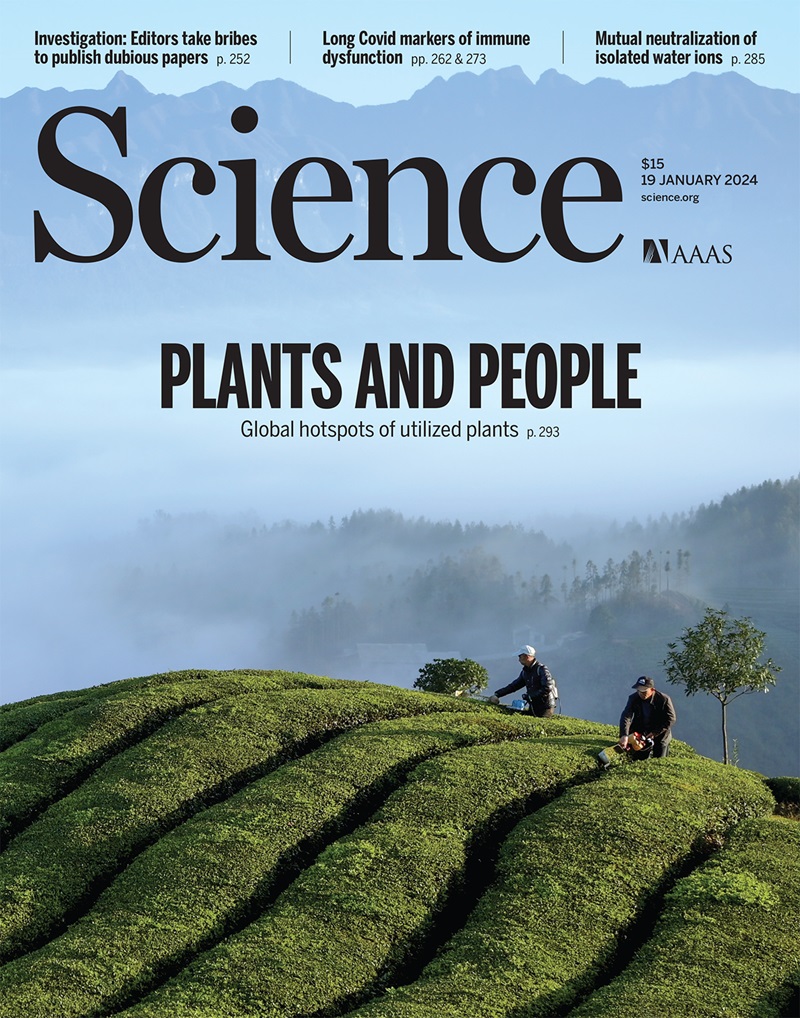人类淀粉酶基因座的重建揭示了现代变异的古老重复。
IF 44.7
1区 综合性期刊
Q1 MULTIDISCIPLINARY SCIENCES
引用次数: 0
摘要
以前的研究表明,人类唾液淀粉酶基因 AMY1 的拷贝数与富含淀粉的饮食有关。然而,由于缺乏准确的、序列解析的单倍型变异图,进化分析受到了阻碍。我们在 98 个现今人类中发现了 30 个结构不同、核苷酸分辨率不同的单倍型,揭示了 AMY1 基因拷贝的编码序列是在负选择下进化的。在古人类和古人类基因组中对这些单倍型进行的基因组分析表明,一种常见的三拷贝单倍型最早可追溯到 800 KYA,它通过反复发生的非等位同源重组为快速进化的重排提供了种子。此外,在过去的4000年中,欧洲农民中具有三个以上AMY1拷贝的单倍型频率显著增加,这可能是对淀粉消化增加的一种适应性反应。本文章由计算机程序翻译,如有差异,请以英文原文为准。
Reconstruction of the human amylase locus reveals ancient duplications seeding modern-day variation
Previous studies suggested that the copy number of the human salivary amylase gene, AMY1, correlates with starch-rich diets. However, evolutionary analyses are hampered by the absence of accurate, sequence-resolved haplotype variation maps. We identified 30 structurally distinct haplotypes at nucleotide resolution among 98 present-day humans, revealing that the coding sequences of AMY1 copies are evolving under negative selection. Genomic analyses of these haplotypes in archaic hominins and ancient human genomes suggest that a common three-copy haplotype, dating as far back as 800,000 years ago, has seeded rapidly evolving rearrangements through recurrent nonallelic homologous recombination. Additionally, haplotypes with more than three AMY1 copies have significantly increased in frequency among European farmers over the past 4000 years, potentially as an adaptive response to increased starch digestion.
求助全文
通过发布文献求助,成功后即可免费获取论文全文。
去求助
来源期刊

Science
综合性期刊-综合性期刊
CiteScore
61.10
自引率
0.90%
发文量
0
审稿时长
2.1 months
期刊介绍:
Science is a leading outlet for scientific news, commentary, and cutting-edge research. Through its print and online incarnations, Science reaches an estimated worldwide readership of more than one million. Science’s authorship is global too, and its articles consistently rank among the world's most cited research.
Science serves as a forum for discussion of important issues related to the advancement of science by publishing material on which a consensus has been reached as well as including the presentation of minority or conflicting points of view. Accordingly, all articles published in Science—including editorials, news and comment, and book reviews—are signed and reflect the individual views of the authors and not official points of view adopted by AAAS or the institutions with which the authors are affiliated.
Science seeks to publish those papers that are most influential in their fields or across fields and that will significantly advance scientific understanding. Selected papers should present novel and broadly important data, syntheses, or concepts. They should merit recognition by the wider scientific community and general public provided by publication in Science, beyond that provided by specialty journals. Science welcomes submissions from all fields of science and from any source. The editors are committed to the prompt evaluation and publication of submitted papers while upholding high standards that support reproducibility of published research. Science is published weekly; selected papers are published online ahead of print.
 求助内容:
求助内容: 应助结果提醒方式:
应助结果提醒方式:


